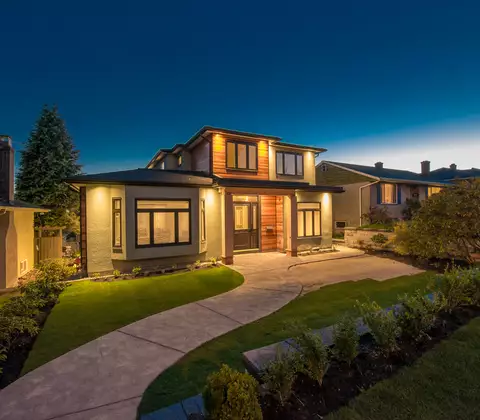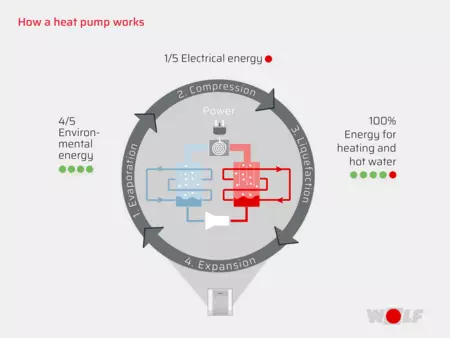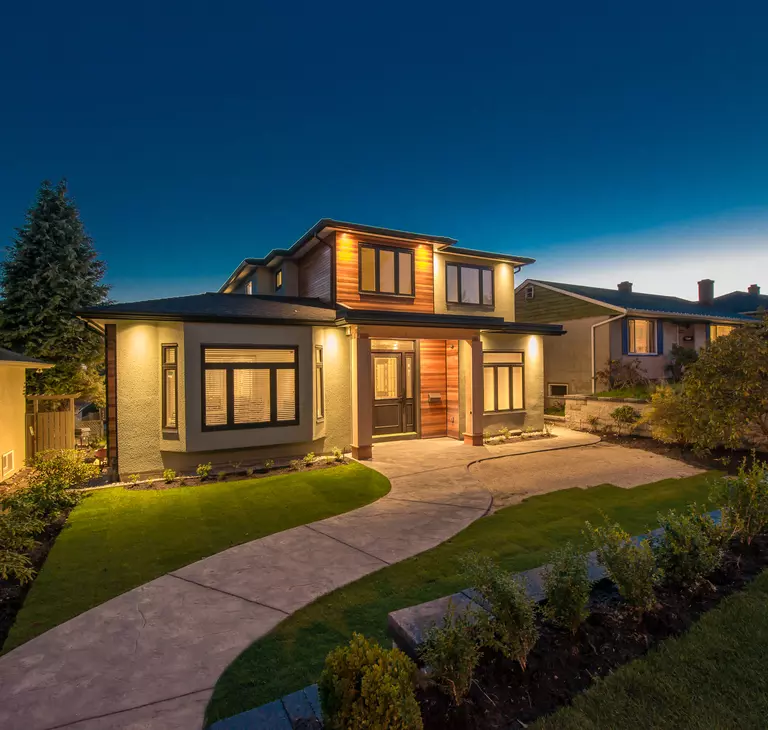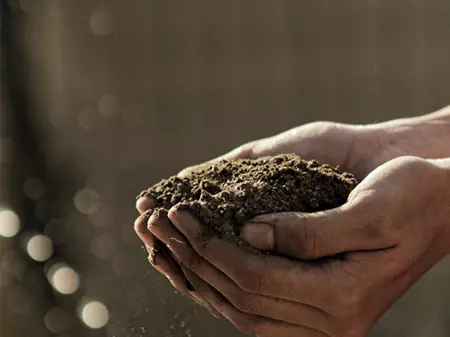Two or three probes are usually sufficient for one detached house, meaning that they won’t take up much room.

Geothermal heat pumps: energy from the ground
Heating with geothermal heat is particularly efficient and environmentally friendly. We will show you how geothermal heat pumps work and whether they are the best choice for your house.
Table of contents
The function of a geothermal heat pump can be compared to that of a refrigerator, only in reverse. Where a fridge removes heat to cool its interior, a geothermal heat pump taps into the heat in the ground to heat the inside of a building.
Air-to-water heat pumps and water-to-water heat pumps also use the same principle, the only difference being that they use heat from the ambient air and ground water respectively.
Liquid-filled pipes are laid underground to enable the heat pump to utilise geothermal heat. These pipes contain a solution of salt, also referred to as brine, which prevents them from freezing. For this reason, experts often call geothermal heat pumps "brine heat pumps". The proper term is brine-to-water heat pump. The brine draws heat from the ground, and the heat pump transfers the heat to the heating water.
Sources for brine-to-water heat pumps can be up to 100 metres deep in the ground. This is known as near-surface geothermal energy. In contrast, conventional geothermal energy can tap into sources that are many hundreds of metres deep and is used to generate electricity.

Geothermal heat has many advantages but also a few minor drawbacks. Your garden will have to be excavated to lay the brine pipes. If you want to use geothermal collectors, the excavations will be particularly extensive and you will need to have sufficient space available.
Not every type of soil transfers heat to the brine pipes equally well. This affects the system’s efficiency and complicates installation. You will also need an official permit in many cases.
The cost of purchasing and installing a geothermal heating system is considerably higher than that of an air source heat pump or an oil or gas boiler. This is due to the complexity of accessing the geothermal source.
04. Which types of geothermal heat pumps and what sources are available?
The following methods are used to transfer geothermal heat to the interior of buildings.
Installation
As a rule, geothermal heat pumps are designed for indoor installation in the boiler room. Some models are also suitable for outdoor installation to save space in the boiler room.
Geothermal probes
Geothermal probes can stretch up to 100 metres down into the ground depending on the thermal conductivity of the soil and heating requirements of the house. Not every substrate is suitable, such as rock. A specialist company must be employed to drill the holes for the geothermal probes.
As geothermal heat pumps that use geothermal probes draw the heat from greater depths, they can also use higher source temperatures and achieve optimum efficiency.
Geothermal collectors
Instead of installing geothermal probes that extend deep into the ground, you can alternatively use geothermal collectors. Geothermal collectors are brine pipes that heating system experts install in your garden in loops. They are usually buried only 1.5 metres down.
In addition to conventional geothermal collectors, prefabricated models in the form of baskets or ring trenches are also available. These types of collector save space as they are three-dimensional instead of two-dimensional.

05. Checklist for buying your new brine-to-water heat pump
When using brine-to-water heat pumps, it is vital that the underground source is properly suited. If it is too small, the heating output will be insufficient and the heat pump will have to boost the temperature using an electric heating element, which impairs its efficiency. An oversized source, on the other hand, will be unnecessarily expensive.
This and the following tips will help you to decide if this type of heat pump is right for you:
If you a want to use a system with probes, you will need to obtain an official permit before you begin drilling.
Geothermal collectors usually do not require approval, but you will need a permit for them in water conservation areas.
Pay attention to the efficiency of the geothermal heat pump. Comparing the seasonal performance factor (SPF) shows how efficiently the respective heat pump uses electricity to generate heat.
Heat pumps are one of the products that are issued an energy efficiency label by the European Union. Geothermal heat pumps should have an A+++ label, indicating the highest efficiency level.
Interested in taking advantage of the special heat pump electricity rate for running your geothermal heat pump? Then your system will need to include ample storage capacity for heating water to cover shut-off times.
If you want to switch to a heat pump as part of modernising your heating system, you should first check the previously mentioned points regarding structural requirements.
Heat pumps work most efficiently in combination with radiant panel heating. If you do not have underfloor heating installed in the house, you should either retrofit a system of this kind or consider alternatives, such as wall heating systems, ceiling panels or large radiators.
If you are heating an old house with little or no thermal insulation, a hybrid heating system consisting of a gas condensing boiler and geothermal heat pump is probably the best choice.
Answering your questions about geothermal heat pumps
The size of the geothermal collectors depends on how well the ground conducts heat. But you can make a good estimate of the area of collectors you will need using a simple formula: the collectors need to be around twice the size of the living space in the house.
When combined with photovoltaics, you can heat your home using electricity produced on site. Combining a geothermal heat pump with solar thermal technology is also worthwhile.

Our recommendation: Heat pump BWS-1
The BWS-1 brine/water heat pump extracts free energy from the ground. Thanks to their high efficiency all year round, they thus ensure a reliable heat supply.


